- Rule, Britannia, no more?
- Unpopular Opinions: US Quadball Cup 2023
- Proven Contenders: University of Virginia
- Proven Contenders: Rutgers University
- Proven Contenders: University of Michigan
- Proven Contenders: Creighton University
- Different Perspectives: A Look Inside USA Ultimate
- Antwerp QC, Much of Belgian Core, Leaves Competitive Quidditch
The Wrong Way to Break the Baylor Zone
- Updated: February 5, 2014
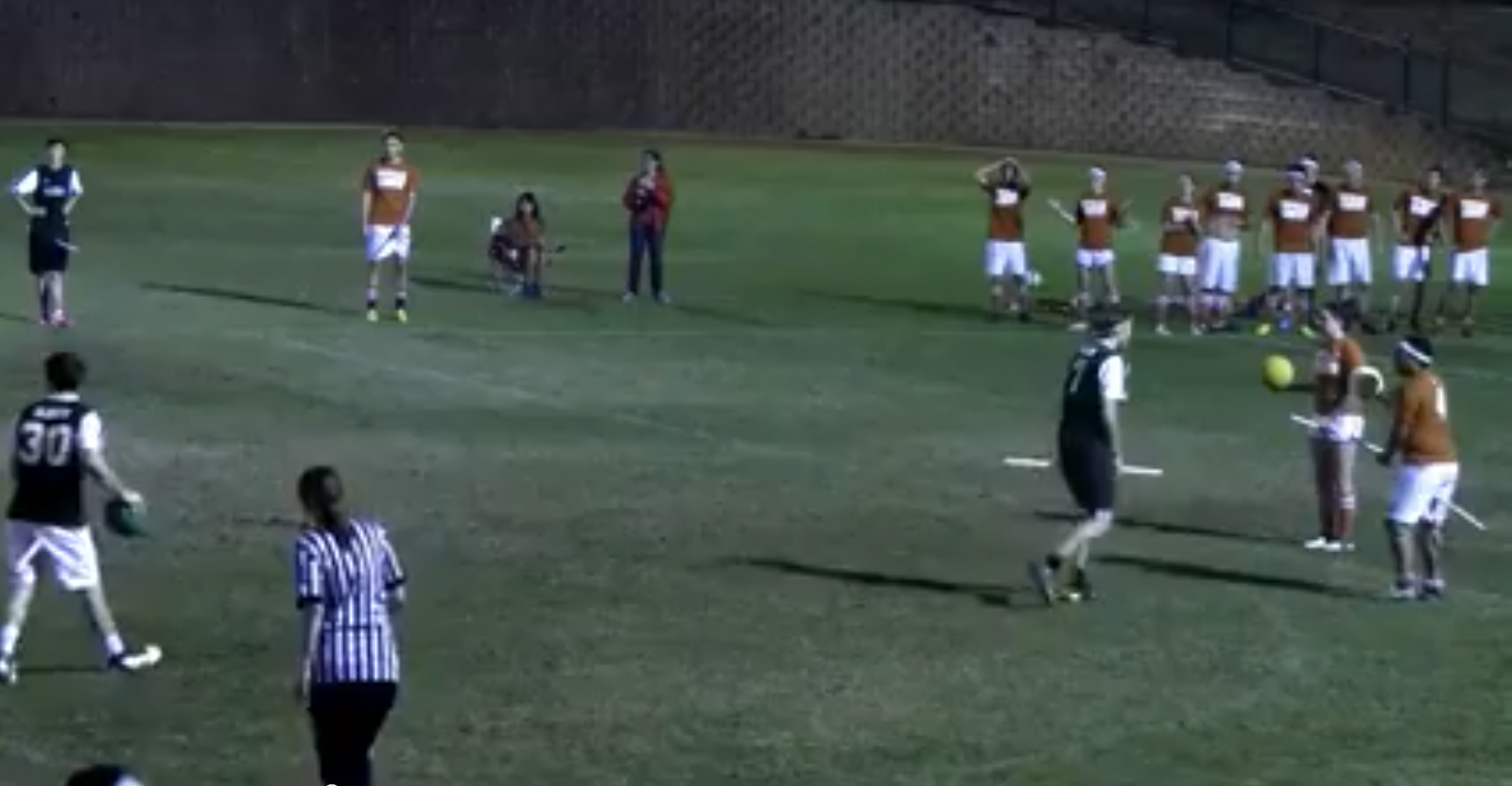
The Baylor zone is probably the most heralded zone defense in the admittedly short history of our sport. Developed early in the 2012-2013 season, it was at the heart of the Bears’ runs to an unexpected Southwest Regional title and a trip to the Final Four of World Cup VI. While it may not be the first zone defense ever played with regularity – that title goes to the University of Minnesota’s “Three Trees Defense” that some argue the Bears’ setup was modeled after – it’s almost undoubtedly been the most effective. Which is saying something, considering the Golden Gophers’ zone earned them a spot in the Final Four of World Cup V.
To steal formatting from soccer, Baylor’s defense is a Fluid 0-3-1, with no quaffle players set up behind the hoops, three at hoop level, and one up on point, with free-flowing beater positions. Minnesota’s zone is of a similar structure, while Emerson’s setup, introduced this year, is a Static 1-2-1, with a more specific positioning for their beaters. The Bears devote three of their quaffle players to one absolute: You will not score a mid-to-long range shot against them. They won’t be stepping out on an unmarked player or jumping a pass – though the zone has gotten more fluid and one pass in the Texas game is intercepted by a “hoop defender” – but they will block any shot that comes at them. While it’s a particularly small sample size, Texas ended two possessions with such shots, and both were blocked. So to score, you inherently need to be driving to the hoops.
In order to do this against a defense with bludger control, which Baylor retains with regularity, you have to worry about three factors: two beaters and a point chaser. Handle all three, and you should be scoring almost every time. Handle two, and you still have an incredibly high chance of putting points on the board.
First, let’s handle the point defender. You have essentially two options here, and both are very straightforward. The first is a simple beat of a point defender by the one bludger-holding beater, who can even back out of the play after that if there is concern about a quick counterattack. In Baylor’s semifinal matchup against UCLA at World Cup VI, the beaters do just that.
The second option is a screen by any other quaffle player, which will also do the job. One obvious concern about the screen is that you are using up the resource of an open quaffle player. But against the Baylor zone, passes rarely do much to create opportunities, while really just giving the Bears’ beaters time to run down the receiver and force a turnover. For reference, here are the 16 Texas half-court possessions against the Baylor zone in the semifinals of Diamond Cup, the number of passes, and the result:
|
Passes |
Possessions |
Possessions ending in shots |
Percentage |
Possessions ending in goals |
Percentage |
|
0 |
7 |
4 |
57% |
3 |
43% |
|
1 |
5 |
2 |
40% |
0 |
0% |
|
2+ |
4 |
0 |
0% |
0 |
0% |
The direct route is almost always best, because passes aren’t really doing anything to eliminate the three factors we’ve talked about earlier. So, the remaining chasers should feel comfortable setting screens to open up space. Once again, we go back to the UCLA-Baylor game, where Jeffrey Lin gives his keeper some space to operate. (Note: I’m sticking with screen shots instead of video clips from this game because somehow there is still no decent quality video of the semifinals of the World Cup…).
The Longhorns, on the other hand, are more than happy to let the Bears’ point defender roam freely. For the first 13 possessions of the game, they don’t beat or screen him. This includes situations where taking the free beat was painfully obvious, like here:
Because of this, the only time Texas was generating any offense for much of the game was when Augustine Monroe successfully juked his way past the point defender. On the eight possessions where he or another ball-carrier failed to do this, the Longhorns didn’t manage a single shot, and turned the ball over near midfield four times. Many of the possessions ended up looking like this:
On the other hand, for the final three possessions before the snitch returned to the pitch, Texas either set a screen or beat the point chaser. The results: A missed pass to an open chaser behind the hoops after drawing out the Baylor beater, a successful drive to the hoops ending in a stuffed shot, and a pass to an open player for a five-foot shot that the keeper pushed back through the hoop. Here’s what they looked like:
While I know they failed to score on these three possessions, you can’t discount the higher percentage opportunities they received just because they didn’t convert them. Just by beating or screening the point beater, Texas went from a gameplan of Monroe heroball or useless possession to a fluid offense creating problems for the Baylor defense.
Now, let’s discuss handling the other two factors: the Baylor beaters. There are two ways to go about this: Attack with just the bludgerless beater, or attack with both, which is more effective, but leaves you more open on the counterattack. Going back to the UCLA game, on most possessions, Andy Abayan would run up and exchange throws with Baylor’s male beater. If he was lucky enough to dodge or catch a beat, he’d then go after the female beater. If not, the UCLA female beater would generally pressure her. Here’s an example, ending in a Bruins’ goal.
Texas, on the other hand, opted for the non-bludger beater plan. The main issue here is that you can only pester one opposing beater, but still, we said disrupting two factors is often enough for a goal, and sure enough, when the Longhorn beater succeeded in wrapping or tackling a Bears beater, and Monroe was able to get past the point chaser, Texas scored two-out-of-three times, with the third time being a blocked shot pointblank at the hoops. Here’s one of those plays:
Unfortunately, only succeeding in disrupting the Baylor beater on 3-of-16 possessions is simply not an efficient enough strategy. Admittedly, the camera angle may have caused me to miss a couple other times, but even then, we are looking at under 50 percent effeciency. Just by going up and throwing a bludger, you’re guaranteed to be effective in at least being a disruption every time. And while it does leave you open to a counterattack, the beater back didn’t help much in that regard anyway, with most of such possessions ending in Bears’ goals before the Longhorns’ female beater ever threw her bludger.
To conclude, I just want to drive home one more time the importance of disrupting the three factors. By my count, when Texas disrupted two factors, they scored 3-of-4 times. When they only disrupted one or none, they failed to score a single time in 12 possessions. Here’s the full chart:
|
Factors Disrupted |
Possessions |
Possessions ending in shots |
Percentage |
Possessions ending in goals |
Percentage |
|
0 |
8 |
0 |
0% |
0 |
0% |
|
1 |
4 |
3 |
75% |
0 |
0% |
|
2 |
4 |
4 |
100% |
3 |
75% |
It’s important to note that this analysis is not meant to argue that the Longhorns are a bad team this season. I have concerns about their female beaters and their discipline, but I don’t think those will necessarily be back-breaking come World Cup time. But being out-strategized — as they clearly were here, despite coming in knowing exactly what Baylor was going to do — was something that plagued Texas for much of last season as well, right up until Colin Capello decided to enter beast mode halfway through pool play at World Cup. Without Capello to bail them out this season, they are going to need to improve their ability to adjust mid-game if they hope to pull off a two-peat.

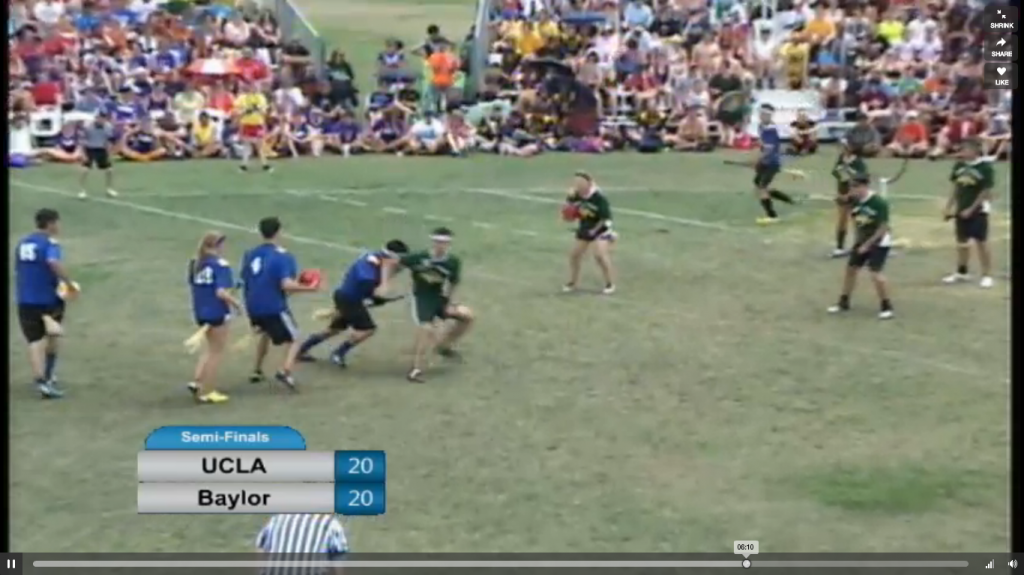
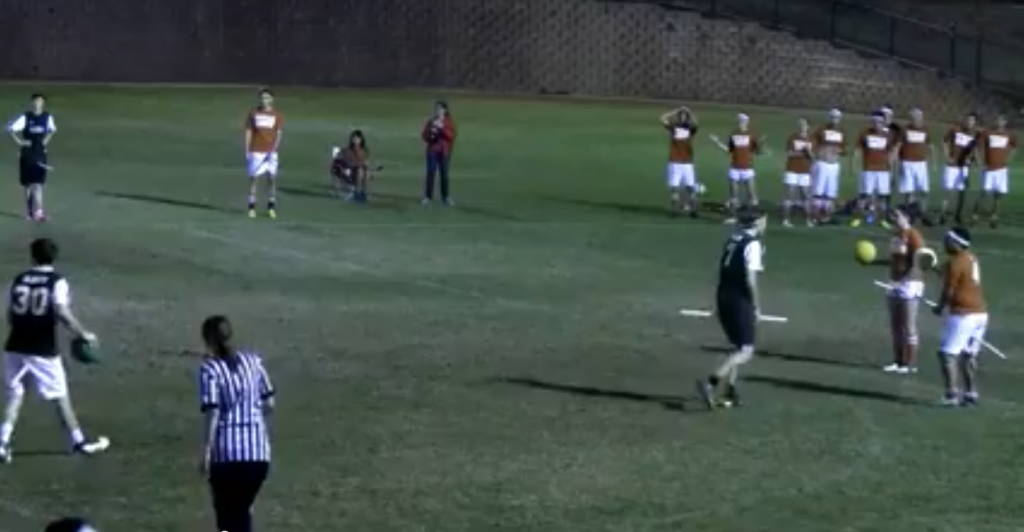
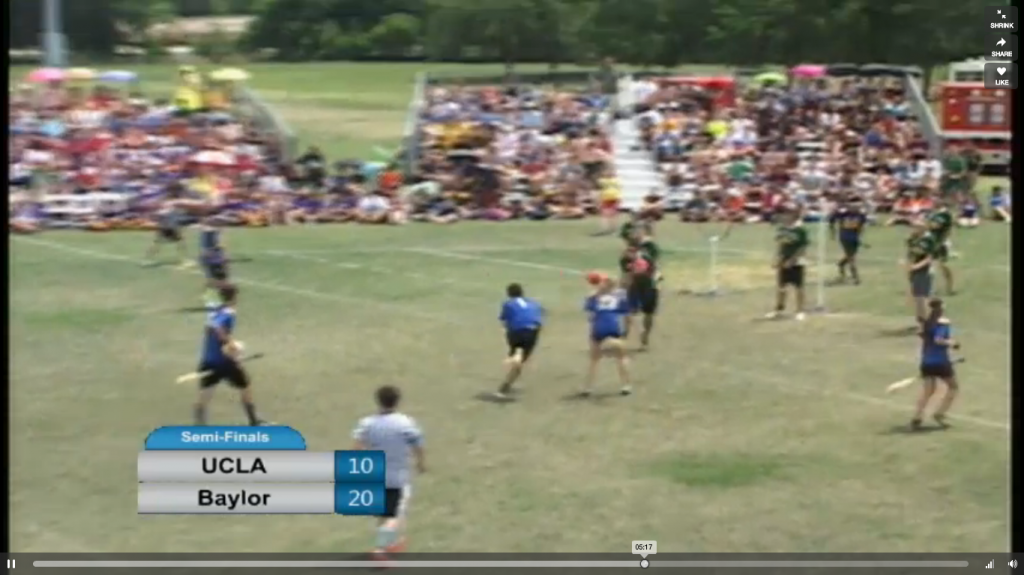
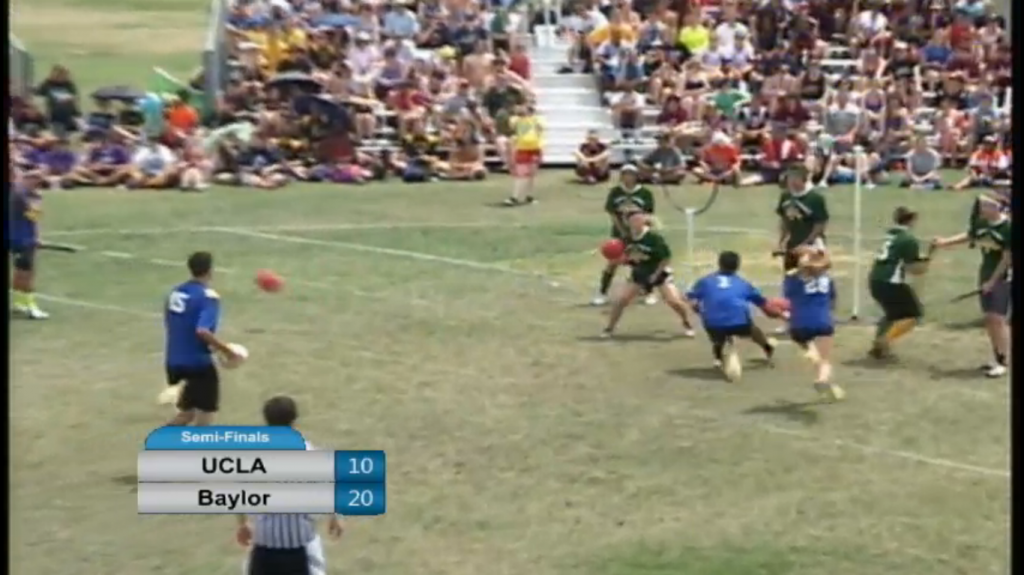
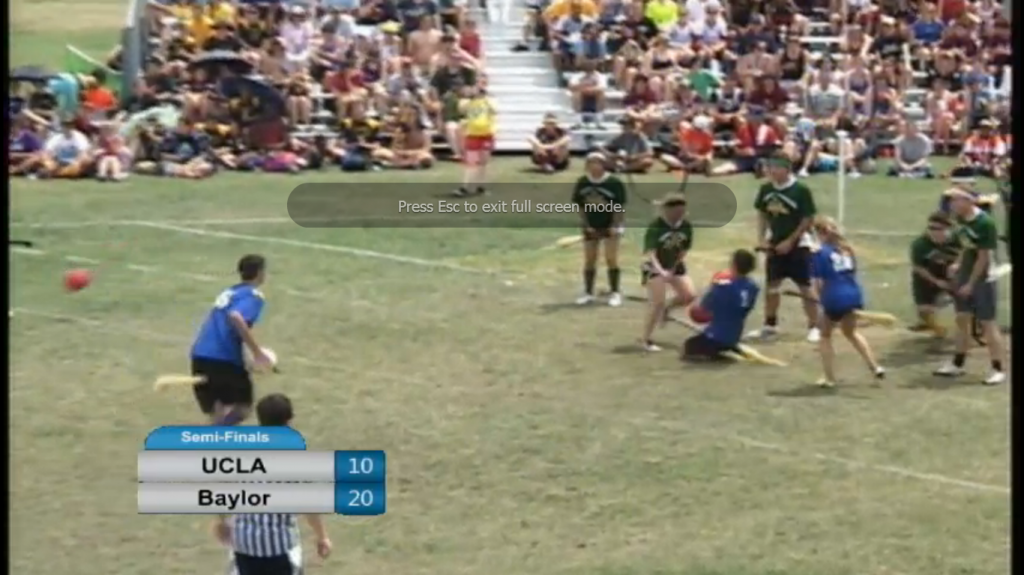
One Comment